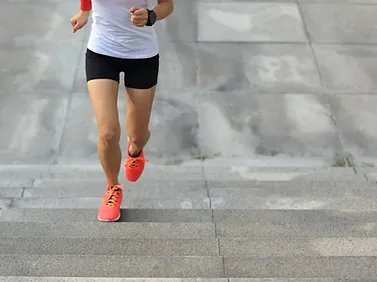Osteoarthritis
Injury Guide

Osteoarthritis, a degenerative joint disease, can present a significant challenge for athletes aiming to perform at their peak. Recognizing the symptoms, understanding the causes, and implementing effective rehabilitation strategies can make a world of difference in managing this condition and getting back in the game.
Symptoms:
Symptoms of osteoarthritis often manifest as joint pain, stiffness, and swelling. Athletes may experience discomfort during physical activity or even at rest. As the disease progresses, joint range of motion can become limited, impacting performance and overall quality of life. It is important to note that symptoms can vary depending on the affected joint, such as the knees, hips, or shoulders.
Anatomy:
Osteoarthritis primarily affects the joints, which are complex structures that facilitate movement and provide stability. A joint is formed where two bones come together, surrounded and supported by various components. In a healthy joint, the ends of the bones are covered by smooth cartilage, which acts as a cushion and allows for frictionless movement. Ligaments, tendons, and muscles provide additional support and stability to the joint.
In osteoarthritis, the cartilage that covers the ends of the bones gradually wears away, leading to joint damage. As a result, the bones may rub against each other, causing pain, inflammation, and swelling. Over time, the joint space narrows, and the bones may develop bony outgrowths called bone spurs or osteophytes. These changes can significantly impact joint function, mobility, and overall athletic performance. It is best to modify activities but also stay active because regular loading of joint surfaces is important to provide nutrition to all parts of the joint.
The implications of osteoarthritis on athletes are substantial. The loss of cartilage and the subsequent joint damage can lead to pain, stiffness, and reduced range of motion. Athletes may find it challenging to engage in their desired activities or perform at their previous levels of intensity. Joint instability and weakness can also increase the risk of further injury or joint damage during physical exertion. A proper rehabilitation program can slow the advancement of degeneration, so that you can maintain function and stay active.
The inflammatory response triggered by osteoarthritis can contribute to ongoing joint degeneration. Inflammation leads to the release of enzymes that break down the remaining cartilage, perpetuating the cycle of joint damage. This chronic inflammation can cause persistent pain and accelerate the progression of the disease if left unmanaged. Normalizing biomechanics and how well you move can go a long way to decrease inflammation.
By addressing muscle imbalances, improving joint stability, and focusing on preserving joint integrity, athletes can effectively manage their symptoms and slow down the progression of the disease.
Causes:
The causes of osteoarthritis in athletes are multifactorial. Repetitive stress on joints, previous injuries, improper biomechanics, and the natural aging process can all contribute to the development and progression of this condition. Athletes who engage in high-impact sports or those with a history of joint trauma are particularly at risk. Genetic factors and obesity can also play a role.
Rehab Strategies:
Rehabilitation strategies tailored for athletes with osteoarthritis are crucial for managing symptoms and promoting joint health. Physical therapy can be instrumental in creating personalized treatment plans to address individual needs. These plans often include a combination of exercises, manual therapy, and education.
Exercise programs designed for athletes with osteoarthritis focus on strengthening the muscles surrounding the affected joint, improving flexibility, and enhancing overall joint stability. Low-impact activities such as swimming or cycling are commonly recommended to minimize stress on the joints while maintaining cardiovascular fitness. Weight management is also emphasized to reduce joint load and inflammation.
Manual therapy techniques, such as joint mobilizations and soft tissue manipulation, can help improve joint mobility and reduce pain. Additionally, therapists may employ modalities like dry needling, soft tissue mobilization, heat or cold therapy to alleviate symptoms and aid in the recovery process.
Education plays a vital role in managing osteoarthritis. Athletes are educated about their condition, its progression, and self-management strategies to implement in daily life. This may include lifestyle modifications, such as proper nutrition, and rest. Athletes are also guided on injury prevention techniques and taught how to modify their training routines to reduce the risk of exacerbating symptoms.
By emphasizing the importance of early intervention, tailored rehabilitation programs, and a holistic approach to managing osteoarthritis, our physical therapy clinic aims to empower athletes in their journey toward recovery. Together, we can overcome the challenges of osteoarthritis and pave the way for a brighter, more active future.
Let’s
Work
Together
Ready to get started? Click here. General questions? Read our FAQ page. Have a specific question? Leave us a message!
